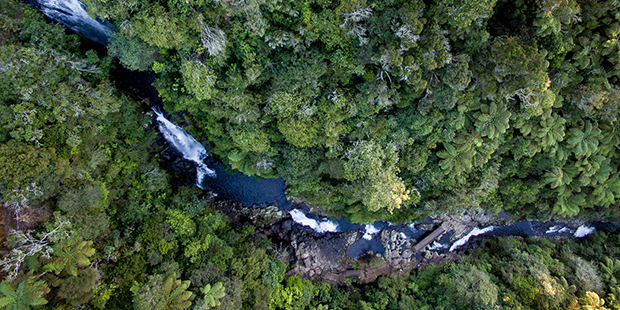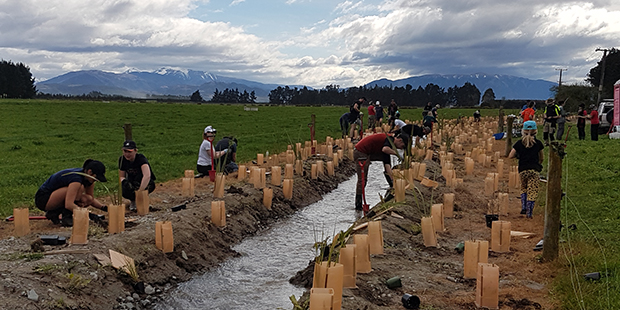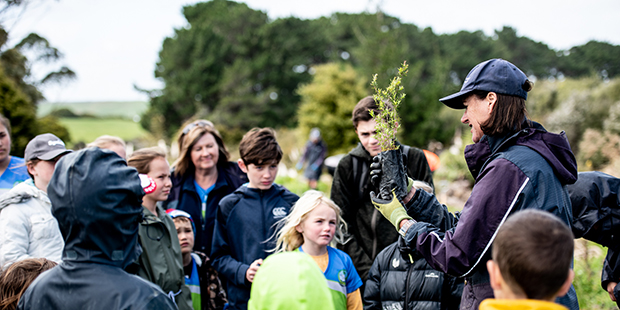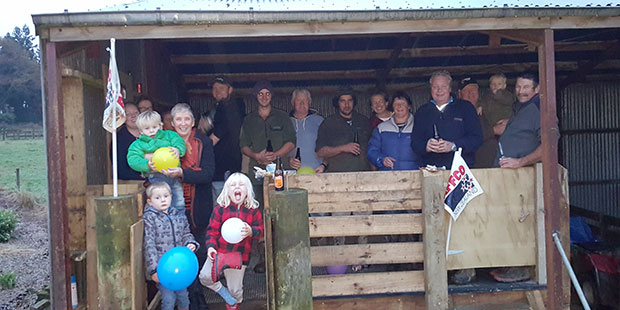How to rescue a waterfall
Work has started on improving the water quality of a
Bay of Plenty gem - Kaiate Falls.
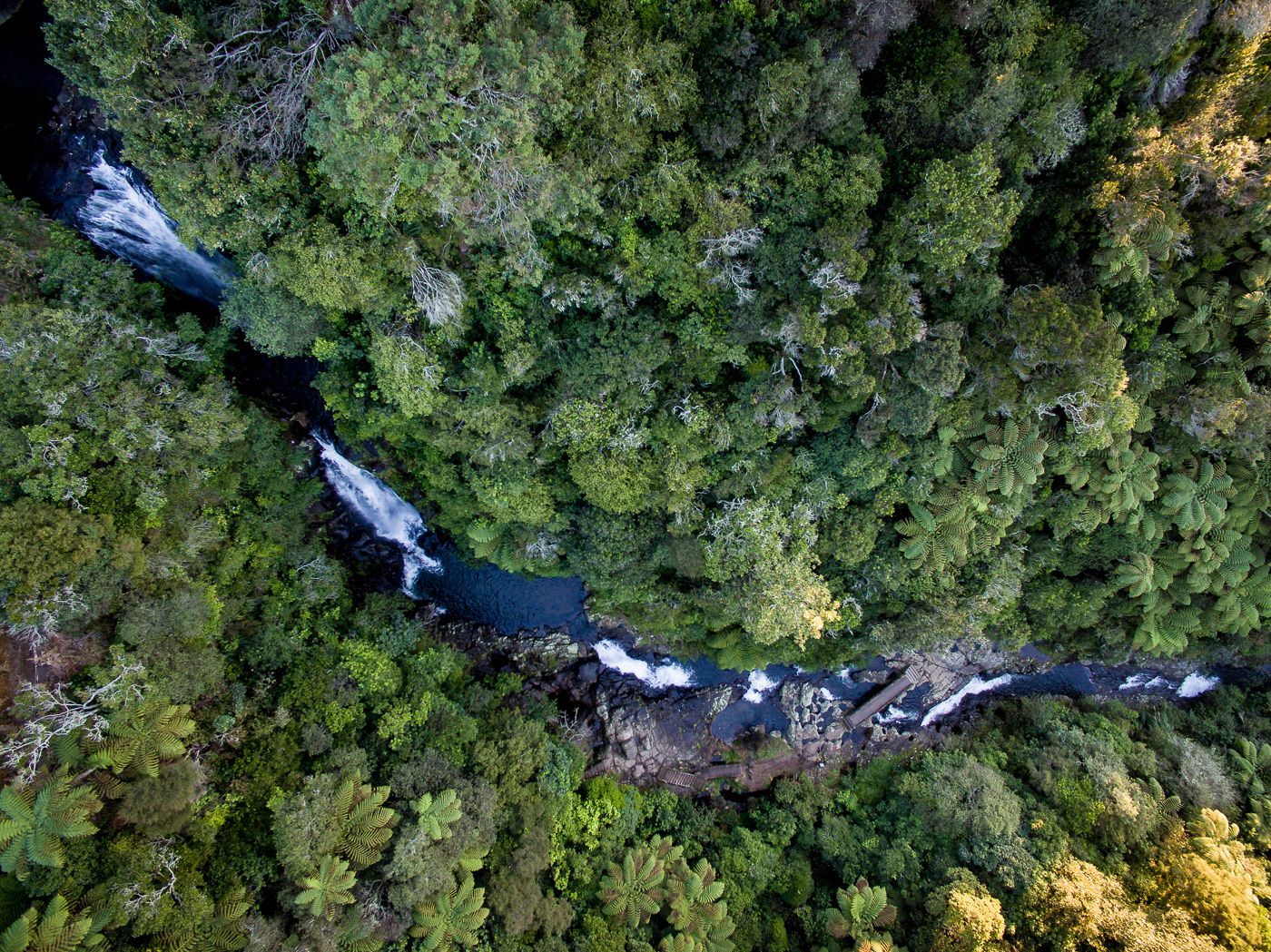

Bay of Plenty landowner Crystal Jones is on a mission to make the popular Kaiate Falls swimmable again.
People have belly flopped, paddled and picnicked at the Kaiate waterfall in the Western Bay of Plenty for generations – renowned as one of the loveliest spots in the region with a car park usually packed to capacity in summer.
In 2015, however, Toi Te Ora issued a permanent health warning which has been in place ever since. E. coli readings have been registered as too high for safe swimming.
Jones, 31, inherited land above the waterfalls three years ago – a beef farm leased out; she lives in Hamilton. The stream running through her land feeds directly into the Kaiate Falls below and she says she is determined to leave the land and the waterfalls in a better state for future generations.
She is coordinating a project called Let’s Make Kaiate Falls Swimmable Again. With help from the Bay of Plenty Regional Council and a volunteer army from the Waitao Landcare Group, 900 native trees were planted in her newly-created riparian strip this winter – the beginning of a five-year plan to improve the stream’s health.
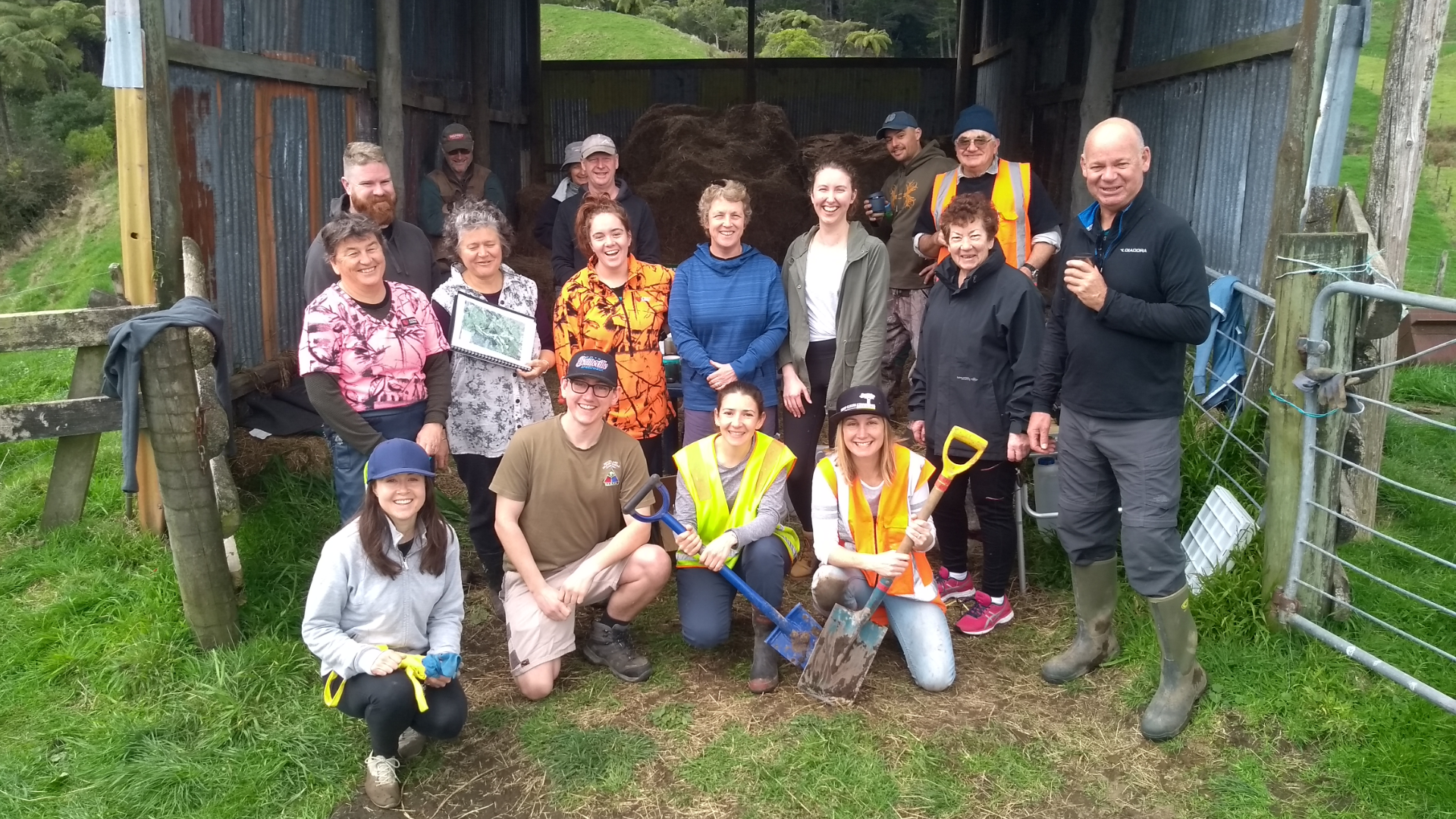
Planting crew. Photo / Supplied
Planting crew. Photo / Supplied
The Kaiate Falls have fond summertime memories for Crystal who spent holidays swimming and picnicking there with her family: “It is such an amazing place. I was there a couple of weeks ago; there were so many native birds and the bush walks are beautiful. It is such a great place for Kiwis and tourists – but it would be so much better if they could swim safely again without having to worry about water quality.”
Jones admits being daunted by the scale of work when she first started talking to the Regional Council about improving the water quality. Over the next five years, she will need to retire and plant out 17 hectares of land, plant up to 20,000 native plants and fence approximately 5.8km to mitigate against future pollution of the stream.
The job seemed expensive and overwhelming. She said the support of the local Waitao community has been vital: “I was daunted. I wondered how I could afford it but, as soon as people found out, they wanted to help.”
“People have given me so much help and advice and it has made a big difference. Being able to collaborate with people and feeling like the local community is behind you has been big.”
She singles out Rob McGowan, a kaumatua and central force of the group, as particularly inspirational: “His knowledge and enthusiasm is contagious. He has helped me grow my own manuka trees; his enthusiasm for trees and the environment helps keep up our momentum.”
The Waitao Landcare Group was formed in 2001, a community group that gets together to help property owners in the area fence off and plant river margins.
“They have achieved so much in our area with riparian planting and having them behind me has made me really grateful,” she says.
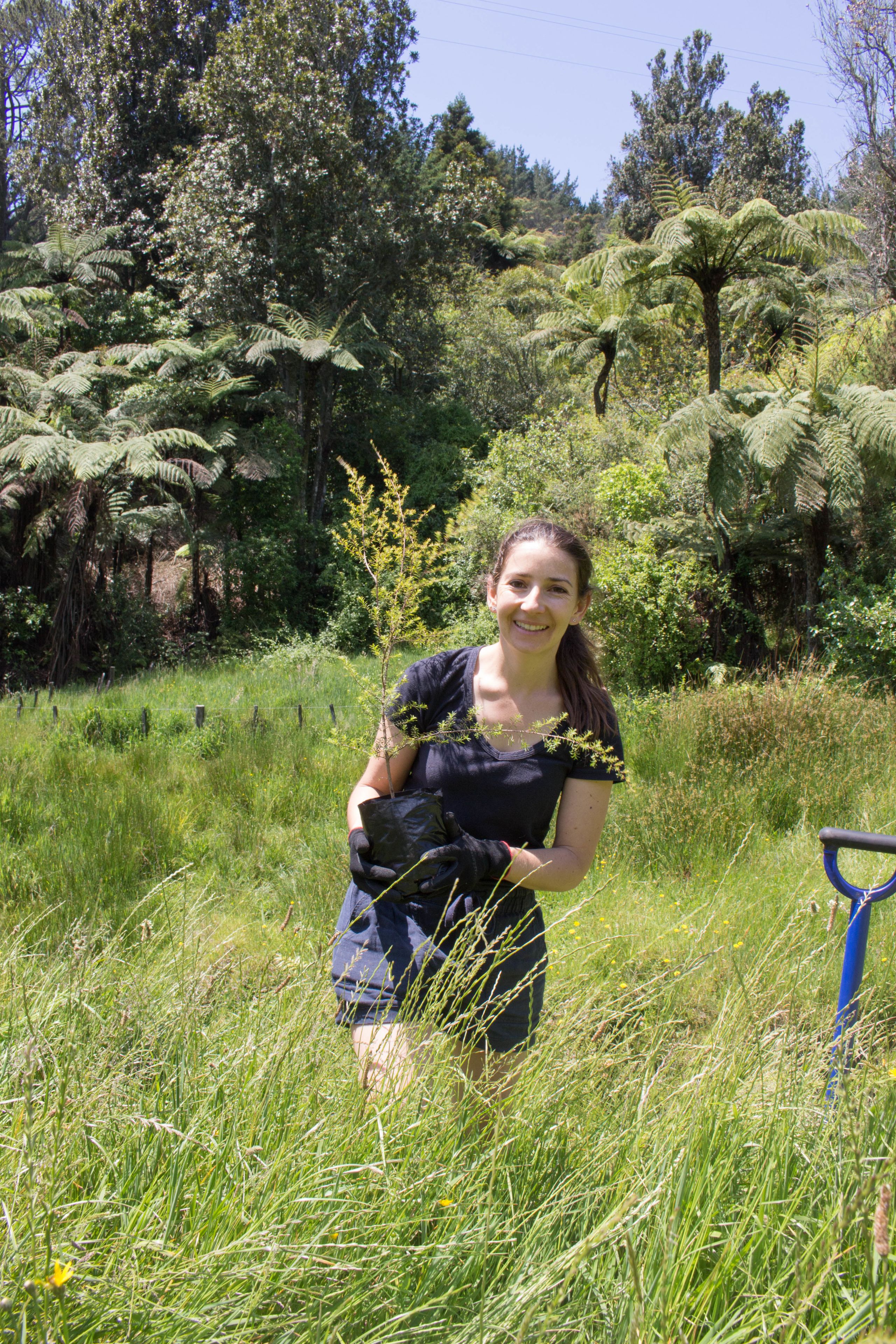
Photo / Supplied
Photo / Supplied
Jones says it is important to do something for the next generation: “It’s up to us, the people in the community at this point in time, because it will take a wee while to see results of our work.
“It will be so great to see not just the stream healthy but also to create a green corridor for the birds and native flora and fauna at Kaiate Falls. This opportunity really excites my love of nature and the science behind measuring water quality excites my love of science.”
The Regional Council’s Western Catchment team leader, Hamish Dean, says scientific data has helped pinpoint where bacteria comes from along the stream and what animals are causing high levels of E. coli. It indicates the majority of bacteria originates from cows, sheep, deer and goats, while a much smaller proportion is attributed to birdlife.
Cleaning up the stream has been a long time coming, he says, but the science needs to be there “so we know exactly what we are dealing with and we can put the right plan in place to fix the problem.”
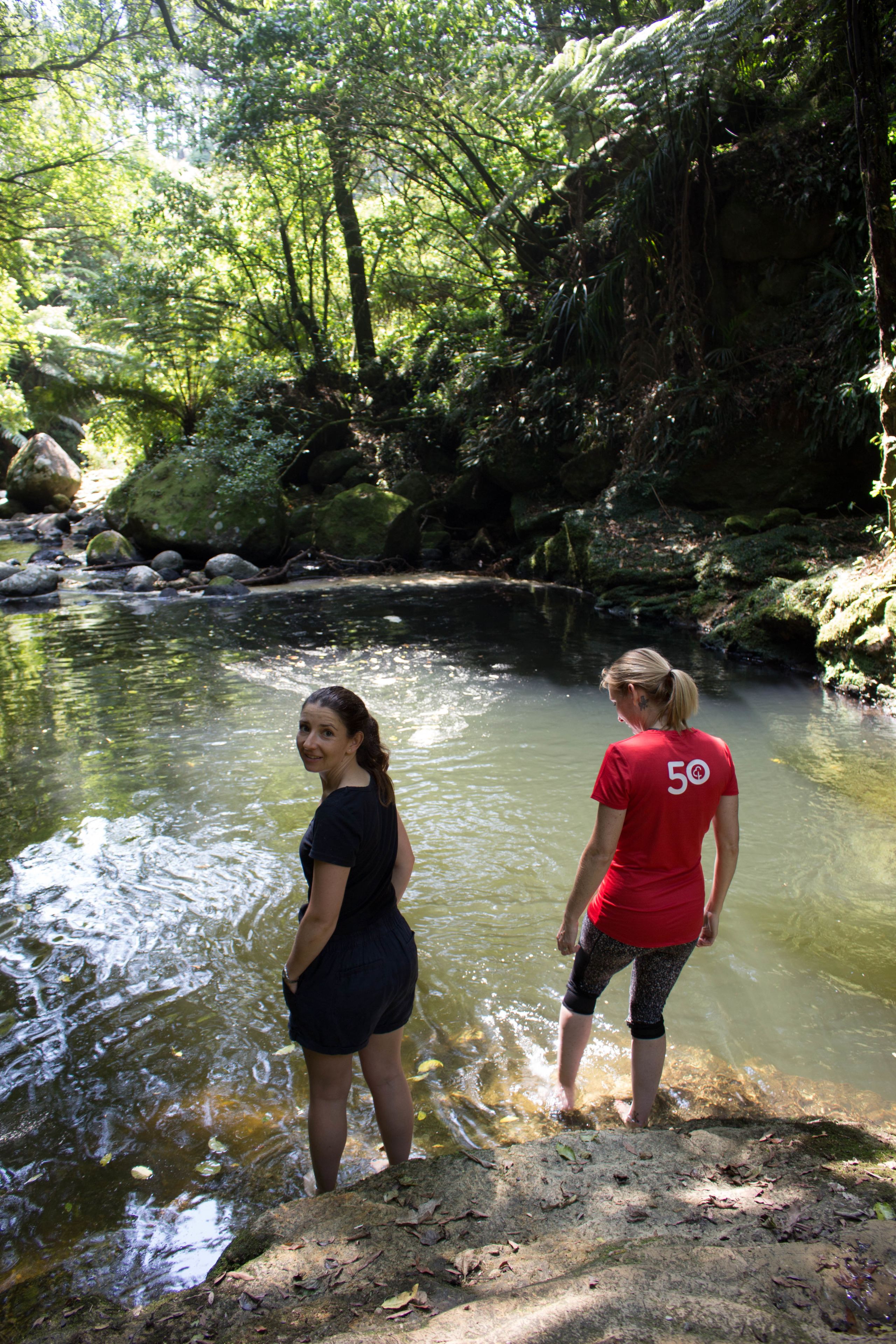
Photo / Supplied
Photo / Supplied
He believes once the land upstream from the waterfall is fenced, and stock removed from other neighbouring land, water quality may improve within as little as six months: “It will not happen overnight because it is an ecosystem and, during heavy rainfall, there will still be problems. But this is a significant step in the right direction.”
The Bay of Plenty Regional Council makes major financial investments protecting waterways and in certain circumstances can help landowners with up to 80 per cent of their costs for land preparation, plants, fencing, pest and weed control.
Jones’ Let’s Make Kaiate Falls Swimmable Again mission is also part of the Million Metres Stream Project, established to accelerate riparian restoration in New Zealand and to help
New Zealanders be part of looking after the health of our waterways.
For more information: www.millionmetres.org.nz


